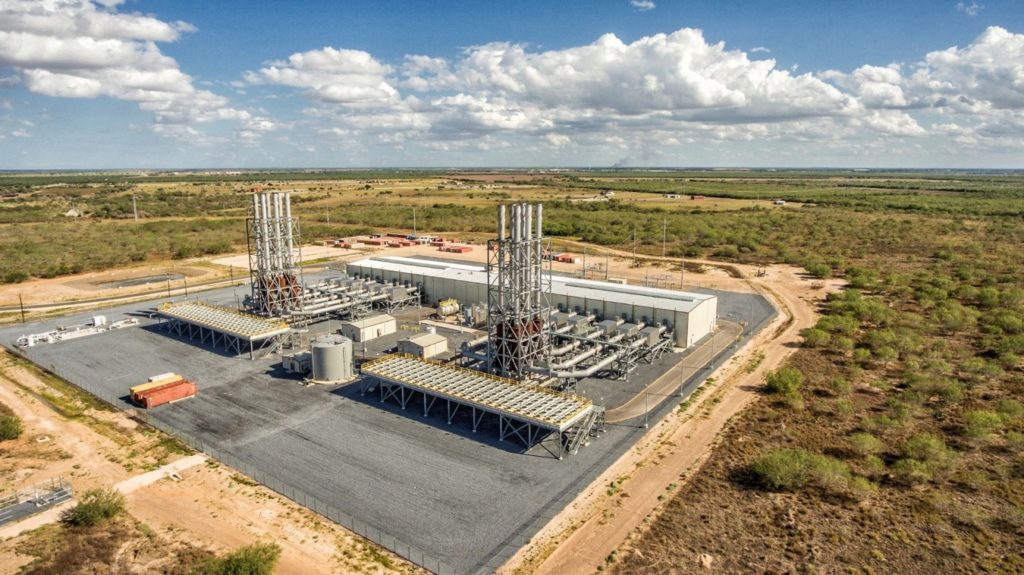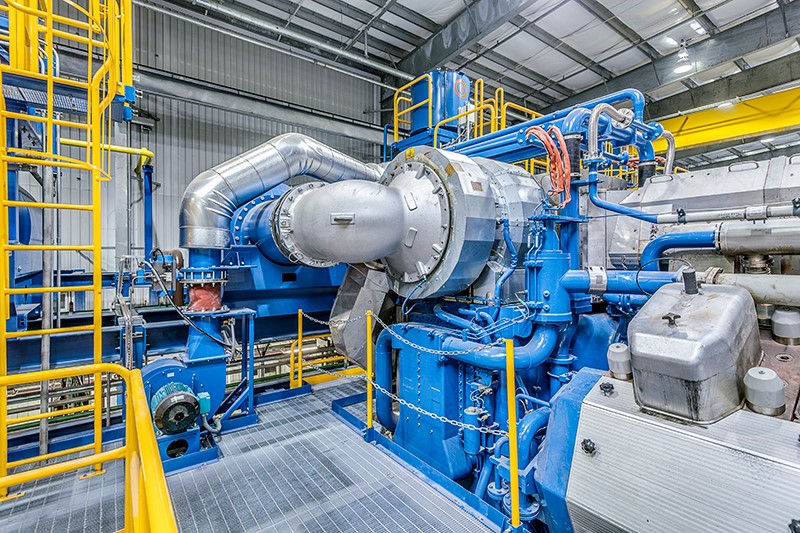EPRI, 20 Power Companies Examine the Role of Reciprocating Internal Combustion Engines for the Grid
In recent years, the generation fleet of American Electric Power (AEP) has experienced a shift similar to those seen by other North American power companies. After being dominated for decades by large fossil and nuclear power generation units up to 1,300 megawatts, the fleet includes a growing number of renewable energy facilities and smaller units under 100 megawatts. With this transition, AEP is considering additional changes in its generation planning.
“We expect more renewables and smaller power plants rather than large natural-gas combined-cycle units,” said Claudia Banner, AEP’s principal engineer for new generation engineering. “This makes it more important to have generation that can start up and shut down quickly and provide backup for renewables.”
These dynamics have prompted AEP to consider reciprocating internal combustion engines (RICE) for its generation portfolios. RICE technology is not new. Fundamentals of engines have been recognized for centuries, and the first internal combustion engines were developed in Europe in the nineteenth century. Their use in billions of automobiles has made them the most prevalent power generators on the planet. Power industry applications generally have been limited to smaller backup power and pumping stations.
Many power industry stakeholders see potential for larger RICE applications to help produce peaking power, support grid reliability, and provide other ancillary services largely related to balancing intermittent renewables. They point to the technology’s operational flexibility, fast startup time, high efficiency at a wide range of loads, ability to use multiple fuels, low water use, and competitive costs. Another driver in North America is cheap natural gas to fuel engines.

South Texas Electric Cooperative’s 225-megawatt Red Gate Plant with reciprocating engines. Photo courtesy of South Texas Electric Cooperative, Inc.
Because coupling multiple, large RICE units (up to 18 megawatts each) for power generation is relatively new, power industry experience is limited. To explore the potential for RICE, EPRI in 2017 formed an interest group with participation from 20 power companies spanning North America, Australia, and Ireland. Group members are considering RICE for various purposes ranging from grid resiliency to baseload power (particularly for isolated or island-based sites).
“The power industry is less familiar with operating engines, especially in a power plant,” said EPRI Program Manager Dr. Andrew Maxson, who leads the RICE Interest Group. “There can be misperceptions and a lack of understanding about what the technology can provide and how to best operate these engines. This is often based on experience with older reciprocating engines powered by diesel or oil, which are more costly and produce more emissions than the latest generation of reciprocating engines.”
Duke Energy joined the interest group to better understand RICE operation and maintenance requirements. “We wanted to learn about the benefits and challenges and compare those to what we thought we knew about RICE and to the technologies we traditionally select for peaking applications,” said Neil Kern, technology development manager at Duke Energy.
Hands-On Learning and Knowledge Sharing
The RICE Interest Group facilitates discussion among EPRI-member companies, vendors, dispatchers, construction companies, engine experts, and other RICE stakeholders. Topics include operations and maintenance, emissions, permitting and regulations, opportunities to reduce costs, portfolio planning, and dispatch strategies and corresponding uses for RICE. Participants are exploring how RICE’s costs, emissions, and other operating characteristics compare with technologies such as gas turbines and energy storage.
The group participates in quarterly webcasts and annual site visits with in-person meetings. During a visit to South Texas Electric Cooperative’s Red Gate facility—which houses twelve 18-megawatt natural-gas-fired engines—representatives from the cooperative, engine manufacturer, environmental controls vendor, and the project’s engineering, procurement, and construction company were available to answer questions. “Everyone presented, and there was honesty and frankness in the discussion,” said Maxson. “The members got to hear the pros and cons about the technology directly from an operator.”

The group learned that RICE advantages depend on the situation and conditions. Relative to gas turbines, RICE is less sensitive to ambient conditions, requires lower natural gas pressures, and has a higher efficiency throughout its operating range. “The performance of gas turbines diminishes as the air temperature increases and as air pressure decreases,” said Maxson. “Because the heat rate and power output of engines are less impacted by ambient conditions, engines may be a good option in a hot or high-altitude location.”
Another insight relates to maintenance. For heavy-duty gas turbines in peaking duty, maintenance costs typically are driven by the frequency of startups and shutdowns, although aero-derivative gas turbines are much less sensitive to startup frequency. For engines, the key driver is operating hours, with significant maintenance implications. “Engines may only operate around 1,000 hours per year. The number of operating hours over the engine’s 30-year life may be small enough that expensive maintenance activities like the replacement of bearings and rings, and potentially larger components like turbochargers, may never need to be done,” said Maxson. “You need to look carefully at the engine’s operational plan to understand its overall life-cycle costs.”
During the visit to the Red Gate facility, the group learned that the operators do much of the maintenance on their own. “It was important for our members to realize that the learning curve is reasonable, and you can potentially reduce your costs by doing maintenance in-house,” said Maxson.
RICE technology has a potential role in balancing intermittent renewable generation but is not always preferable to gas turbines. Details of the application matter. For example, turbines may be a better choice on smaller sites because they require less space than engines. While natural-gas-fired engines have received environmental permits in states with rigorous regulations—such as California and New York—it can be more challenging to meet environmental mandates for engines powered by diesel and other fuels.
To inform utilities as they compare RICE with gas turbines and other technologies, the RICE Interest Group is compiling RICE’s advantages and disadvantages (see box below).
“To determine whether RICE is a good fit, each company needs to evaluate the generation options with respect to its own unique circumstances,” said Maxson. “The RICE Interest Group provides up-to-date information that our members can use in their portfolio planning to make the best decisions possible.”

Future Research at EPRI
For the remainder of 2018, the RICE Interest Group will continue webinars and other meetings and identify research opportunities. The next step is to determine what new EPRI research should be done as part of existing programs. “Several research needs have already emerged,” said Maxson. “We need to reduce maintenance costs with new sensors and effective maintenance strategies, better understand how to generate revenue for ancillary services, and obtain more accurate performance and cost numbers for portfolio planning. Continuing a collaborative forum to share lessons learned is also important.”
According to Kern, the RICE Interest Group provided Duke Energy with valuable information on the technology and its benefits and challenges, informing the utility as it considers technologies for peaking applications. “We have gained a lot of insight on the RICE market, the manufacturers’ offerings, and the development paths for power generation applications,” said Kern.
Lessons from the group are informing AEP’s plans for balancing a grid with more renewables. Though it’s clear that RICE technology will play a role in the generation portfolio, the extent of its contribution has yet to be determined. “AEP is modeling reciprocating engines in generation planning,” said AEP’s Banner. “We will continue to improve our understanding of capital, operations, and maintenance costs. We’re also looking at how much additional design is needed for these facilities to reduce noise, achieve desired startup times and ramp rates, and comply with emissions mandates. Reciprocating engines will play a part in balancing the grid and renewables.”
Key EPRI Technical Experts:
Andrew Maxson, Dale Grace
For more information, contact techexpert@eprijournal.com.
Additional Resources:
Artwork and infographic by David Foster Graphics


